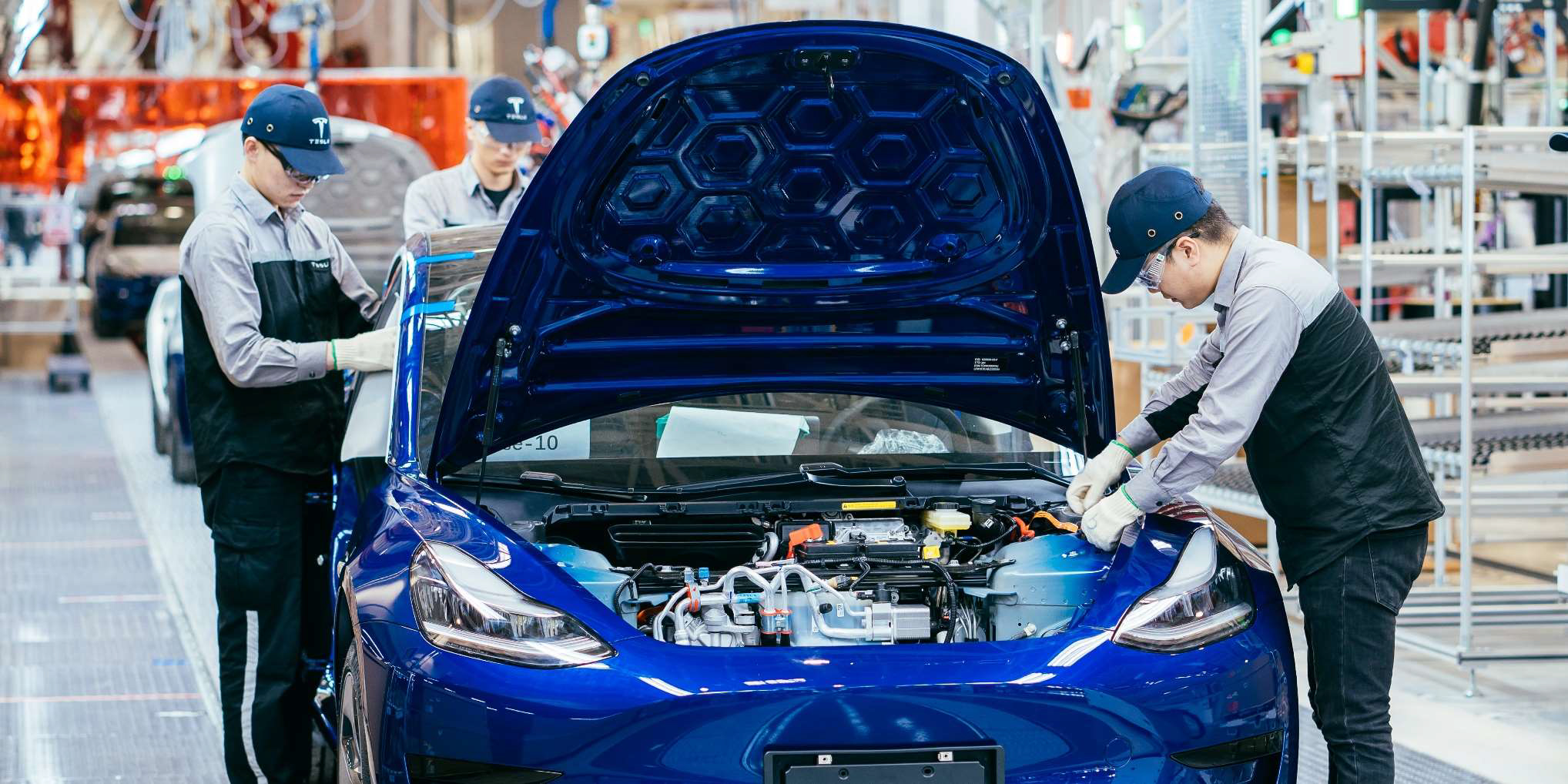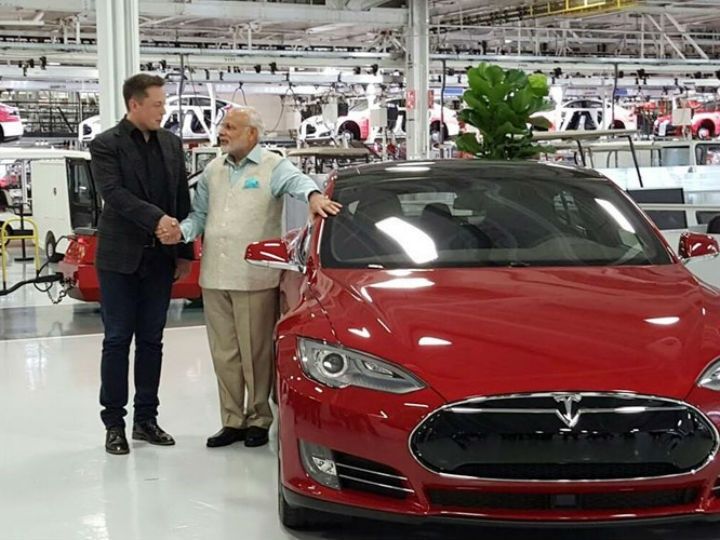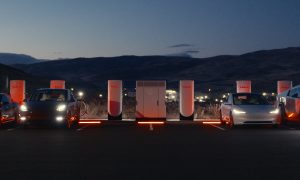

News
Why Tesla’s road in India may end before it even starts
This is a preview from our weekly newsletter. Each week I go ‘Beyond the News’ and handcraft a special edition that includes my thoughts on the biggest stories, why it matters, and how it could impact the future.
For years, Indian citizens have pleaded with Tesla CEO Elon Musk about the possibility of the electric automaker building and delivering cars in the country. India, a large landmass that 1.366 billion people call home, has less than 1% of its 30 million cars being of an electric nature, the most sustainable way to operate a vehicle. However, Tesla aims to change that with an imminent entrance into India’s market. The problem is, Tesla’s road in India may end before it even begins, which would be a massive blow to the company and its supporters in the country, as Tesla fans have waited several years for any indication that the car company would finally make an appearance in their section of the world. But, strict regulations and inside political interests are halting the possibility, and it has people wondering whether the world’s leading electric car company will ever make it to the Indian automotive market.
Many of you who read Teslarati on a daily basis know that we have been tracking the situation in India since the early days. In fact, one of my first articles of 2021, while I was recovering from COVID-19 in January, was about the potential that Tesla had in India’s markets. Additionally, it seemed that some potential customers would be ready to order their first all-electric cars from the Silicon Valley-based electric car company by the time Q2 rolled around. However, these pieces of outlook from Musk were not met because the Indian government has shut down any attempt Tesla has made toward getting their products in the country without the hefty import duties. Unfortunately, it doesn’t seem as if they will be going away soon, either, as Prime Minister Narendra Modi, who has heavily supported the idea of local manufacturing efforts, will not be forced to leave his post or enter another election until 2024.
While local manufacturing is something Americans take a lot of pride in, especially with cars, there are undoubtedly advantages to building things domestically. First, companies must hire workers in the country that the business is stationed in. Next, the increase of manufacturing jobs not only improves the American economy, but it also provides job security for the millions of employees that are on assembly lines 40 hours (or more) a week. There are a lot of strengths in manufacturing things locally, but there is also room for foreign entities to bring their products into a market, especially if they can benefit a foreign economy like it does a domestic one.
Musk with Modi in 2015
This is something Tesla argued in its proposal letter to the Indian government a few weeks ago when it requested a reduction in import duties. The increase in Tesla imports would actually assist the country in developing a charging infrastructure, which would supply jobs to the energy sector and provide cleaner transportation options in a country where the climate and environment struggle heavily with smog and emissions. Additionally, Tesla would need a dedicated Service Center in several locations as India is a large country. Not to mention, showrooms would also provide some employment opportunities.
Musk has said that Tesla will not bring a Gigafactory to India without some sort of data that would support healthy demand, something that is obviously needed to justify building a near-billion dollar production plant in India. Doing this through imports is a tremendous idea, but 60% import taxes on sub-$40k vehicles, and 100% duties on $40,000 and up vehicles just will not get this done. Plain and simple. There needs to be some movement on the Indian government’s end.
However, the Indian politicians fail to realize that the economic and environmental advantages to having EVs in the country will be a better move long term. Instead, they fail to budge or even consider reducing import duties of any kind, at least to this point, which appears to discourage Tesla’s requests to enter the market. It would be a shame if no solution can be reached after this problem because I believe that the environmental impacts alone will be something that not only the Indian people will enjoy, but the people of the world will begin to see eventually. As the air begins to clear and the smog disperses, there could be a relative ease on the strong relationship with gas and oil India has. Sustainable energy could make its way to India within the next few years, and Tesla could see the potential for its biggest Gigafactory yet in India.
Think about the economic benefits a large-scale production facility could provide. Not only would it produce well-paying jobs, but it would also create a lot of them.
There are so many benefits for both Tesla and India if a deal can be worked out. But can it? In my opinion, Tesla may be better off delaying the India operation for another few years, when a fresh administration and new ideas can be thrown around about Tesla entering the market. It seems, for now, there won’t be much of a possibility, and Tesla may be better off expanding its efforts in the UK or elsewhere.
With that being said, I would love to hear how you feel about this issue. Is Tesla wasting its time trying to get things going in India? Should it try again in a few years? Do you feel progress can be made? Why or why not? If not India, then where should Tesla consider a new Gigafactory?
A big thanks to our long-time supporters and new subscribers! Thank you.
I use this newsletter to share my thoughts on what is going on in the Tesla world. If you want to talk to me directly, you can email me or reach me on Twitter. I don’t bite, be sure to reach out!
Elon Musk
Tesla investors will be shocked by Jim Cramer’s latest assessment
Jim Cramer is now speaking positively about Tesla, especially in terms of its Robotaxi performance and its perception as a company.

Tesla investors will be shocked by analyst Jim Cramer’s latest assessment of the company.
When it comes to Tesla analysts, many of them are consistent. The bulls usually stay the bulls, and the bears usually stay the bears. The notable analysts on each side are Dan Ives and Adam Jonas for the bulls, and Gordon Johnson for the bears.
Jim Cramer is one analyst who does not necessarily fit this mold. Cramer, who hosts CNBC’s Mad Money, has switched his opinion on Tesla stock (NASDAQ: TSLA) many times.
He has been bullish, like he was when he said the stock was a “sleeping giant” two years ago, and he has been bearish, like he was when he said there was “nothing magnificent” about the company just a few months ago.
Now, he is back to being a bull.
Cramer’s comments were related to two key points: how NVIDIA CEO Jensen Huang describes Tesla after working closely with the Company through their transactions, and how it is not a car company, as well as the recent launch of the Robotaxi fleet.
Jensen Huang’s Tesla Narrative
Cramer says that the narrative on quarterly and annual deliveries is overblown, and those who continue to worry about Tesla’s performance on that metric are misled.
“It’s not a car company,” he said.
He went on to say that people like Huang speak highly of Tesla, and that should be enough to deter any true skepticism:
“I believe what Musk says cause Musk is working with Jensen and Jensen’s telling me what’s happening on the other side is pretty amazing.”
Tesla self-driving development gets huge compliment from NVIDIA CEO
Robotaxi Launch
Many media outlets are being extremely negative regarding the early rollout of Tesla’s Robotaxi platform in Austin, Texas.
There have been a handful of small issues, but nothing significant. Cramer says that humans make mistakes in vehicles too, yet, when Tesla’s test phase of the Robotaxi does it, it’s front page news and needs to be magnified.
He said:
“Look, I mean, drivers make mistakes all the time. Why should we hold Tesla to a standard where there can be no mistakes?”
It’s refreshing to hear Cramer speak logically about the Robotaxi fleet, as Tesla has taken every measure to ensure there are no mishaps. There are safety monitors in the passenger seat, and the area of travel is limited, confined to a small number of people.
Tesla is still improving and hopes to remove teleoperators and safety monitors slowly, as CEO Elon Musk said more freedom could be granted within one or two months.
News
Tesla launches ultra-fast V4 Superchargers in China for the first time
Tesla has V4 Superchargers rolling out in China for the first time.

Tesla already has nearly 12,000 Supercharger piles across mainland China. However, the company just initiated the rollout of the ultra-fast V4 Superchargers in China for the first time, bringing its quick-charging piles to the country for the first time since their launch last year.
The first batch of V4 Superchargers is now officially up and running in China, the company announced in a post on Chinese social media outlet Weibo today.
The company said in the post:
“The first batch of Tesla V4 Superchargers are online. Covering more service areas, high-speed charging is more convenient, and six-layer powerful protection such as rain and waterproof makes charging very safe. Simultaneously open to non-Tesla vehicles, and other brands of vehicles can also be charged. There are more than 70,000 Tesla Superchargers worldwide. The charging network layout covers 100% of the provincial capitals and municipalities in mainland China. More V4 Superchargers will be put into use across the country. Optimize the charging experience and improve energy replenishment efficiency. Tesla will accompany you to the mountains, rivers, lakes, and seas with pure electricity!”
The first V4 Superchargers Tesla installed in China are available in four cities across the country: Shanghai, Zhejiang, Gansu, and Chongqing.

Credit: Tesla China
Tesla has over 70,000 Superchargers worldwide. It is the most expansive and robust EV charging network in the world. It’s the main reason why so many companies have chosen to adopt Tesla’s charging connector in North America and Europe.
In China, some EVs can use Tesla Superchargers as well.
The V4 Supercharger is capable of charging vehicles at speeds of up to 325kW for vehicles in North America. This equates to over 1,000 miles per hour of charging.
Elon Musk
Elon Musk hints at when Tesla could reduce Safety Monitors from Robotaxi
Tesla could be reducing Safety Monitors from Robotaxi within ‘a month or two,’ CEO Elon Musk says.

Elon Musk hinted at when Tesla could begin reducing Safety Monitors from its Robotaxis. Safety Monitors are Tesla employees who sit in the front passenger seat during the driverless rides, and are there to ensure safety for occupants during the earliest rides.
Tesla launched its Robotaxi fleet in Austin last Sunday, and after eight days, videos and reviews from those who have ridden in the driverless vehicles have shown that the suite is safe, accurate, and well coordinated. However, there have been a few hiccups, but nothing that has put anyone’s safety in danger.
A vast majority — close to all of the rides — at least according to those who have ridden in the Robotaxi, have been performed without any real need for human intervention. We reported on what was the first intervention last week, as a Safety Monitor had to step in and stop the vehicle in a strange interaction with a UPS truck.
Watch the first true Tesla Robotaxi intervention by safety monitor
The Tesla and UPS delivery truck were going for the same street parking space, and the Tesla began to turn into it. The UPS driver parallel parked into the spot, which was much smaller than his truck. It seemed to be more of an instance of human error instead of the Robotaxi making the wrong move. This is something that the driverless cars will have to deal with because humans are aggressive and sometimes make moves they should not.
The Safety Monitors have not been too active in the vehicles. After all, we’ve only seen that single instance of an intervention. There was also an issue with the sun, when the Tesla braked abnormally due to the glare, but this was an instance where the car handled the scenario and proceeded normally.
With the Robotaxi fleet operating impressively, some are wondering when Tesla will begin scaling back both the Safety Monitors and Teleoperators that it is using to ensure safety with these early rides.
CEO Elon Musk answered the inquiry by stating, “As soon as we feel it is safe to do so. Probably within a month or two.”
As soon as we feel it is safe to do so.
Probably within a month or two. We continue to improve the Tesla AI with each mile driven.
— Elon Musk (@elonmusk) June 30, 2025
Musk’s response seems to confirm that there will be fewer Teleoperators and Safety Monitors in the coming months, but there will still be some within the fleet to ensure safety. Eventually, that number will get to zero.
Reaching a point where Tesla’s Robotaxi is driverless will be another significant milestone for the company and its path to fully autonomous ride-sharing.
Eventually, Tesla will roll out these capabilities to consumer-owned vehicles, offering them a path to generate revenue as their car operates autonomously and completes rides.
For now, Tesla is focusing on perfecting the area of Austin where it is currently offering driverless rides for just $4.20 to a small group of people.
-

 News5 days ago
News5 days agoTesla Robotaxi’s biggest challenge seems to be this one thing
-

 News2 weeks ago
News2 weeks agoTesla confirms massive hardware change for autonomy improvement
-

 Elon Musk2 weeks ago
Elon Musk2 weeks agoElon Musk slams Bloomberg’s shocking xAI cash burn claims
-

 News2 weeks ago
News2 weeks agoTesla features used to flunk 16-year-old’s driver license test
-

 News2 weeks ago
News2 weeks agoTesla China roars back with highest vehicle registrations this Q2 so far
-

 News2 weeks ago
News2 weeks agoTexas lawmakers urge Tesla to delay Austin robotaxi launch to September
-

 News2 weeks ago
News2 weeks agoTesla dominates Cars.com’s Made in America Index with clean sweep
-

 News2 weeks ago
News2 weeks agoTesla’s Grok integration will be more realistic with this cool feature


















